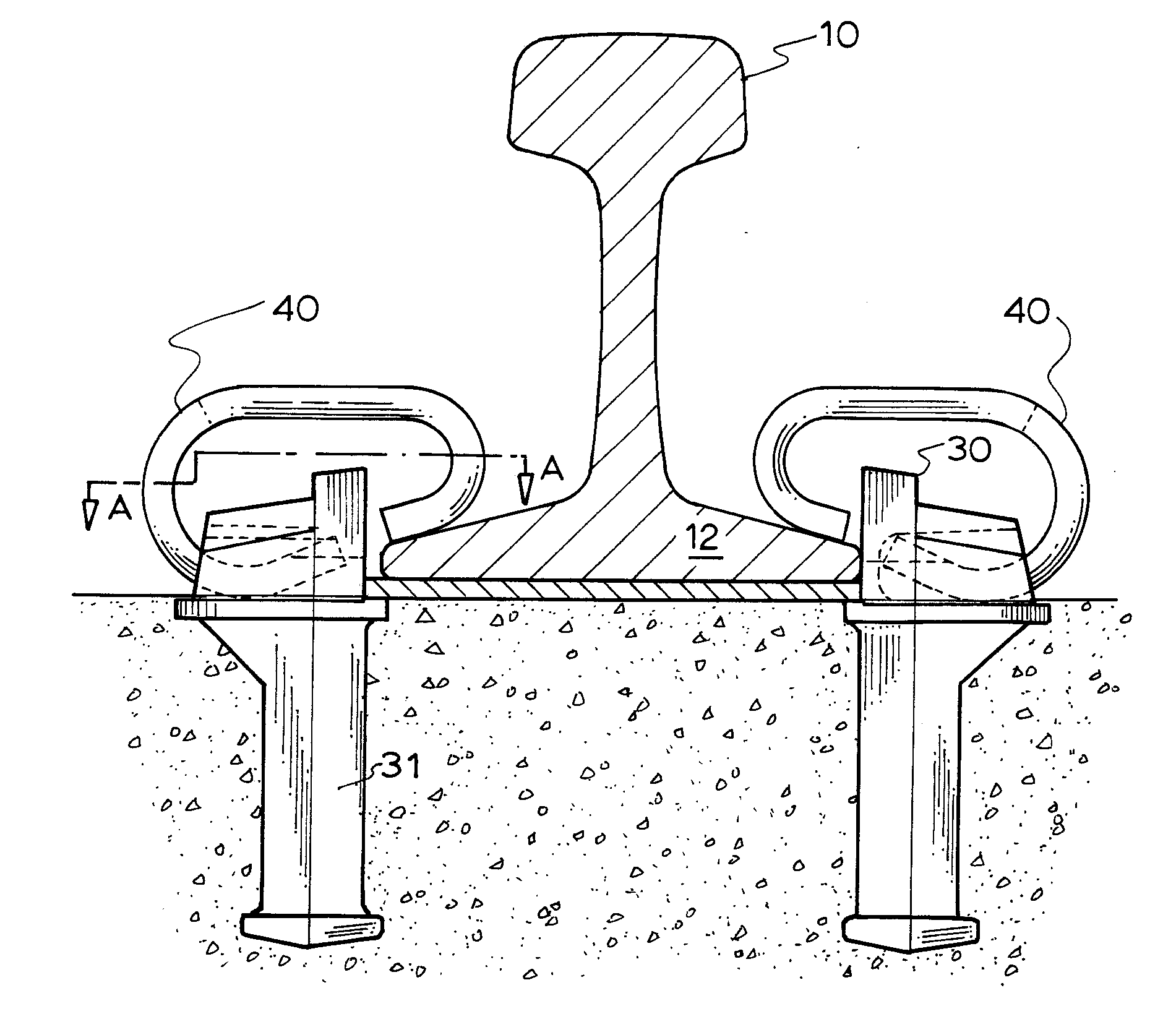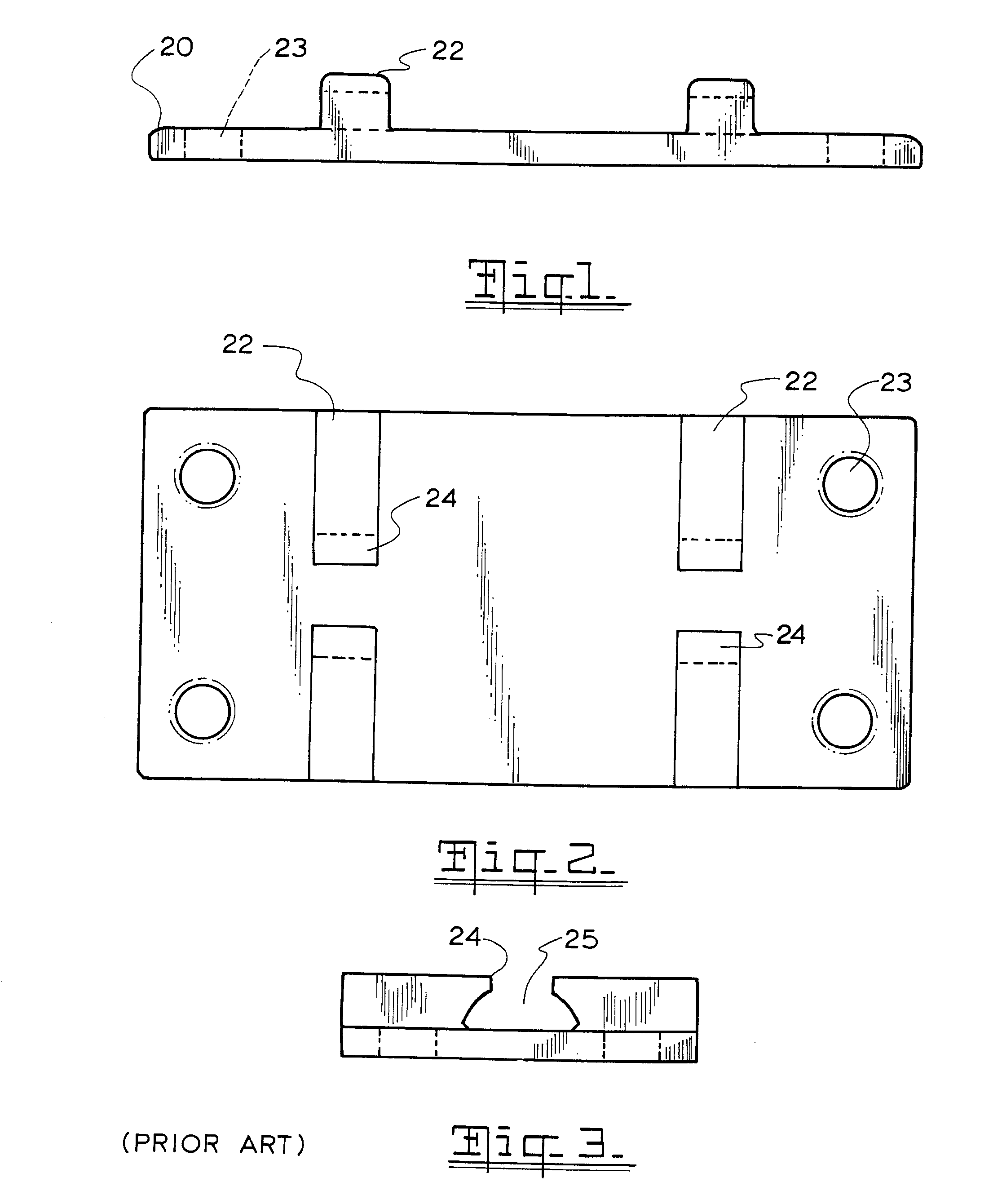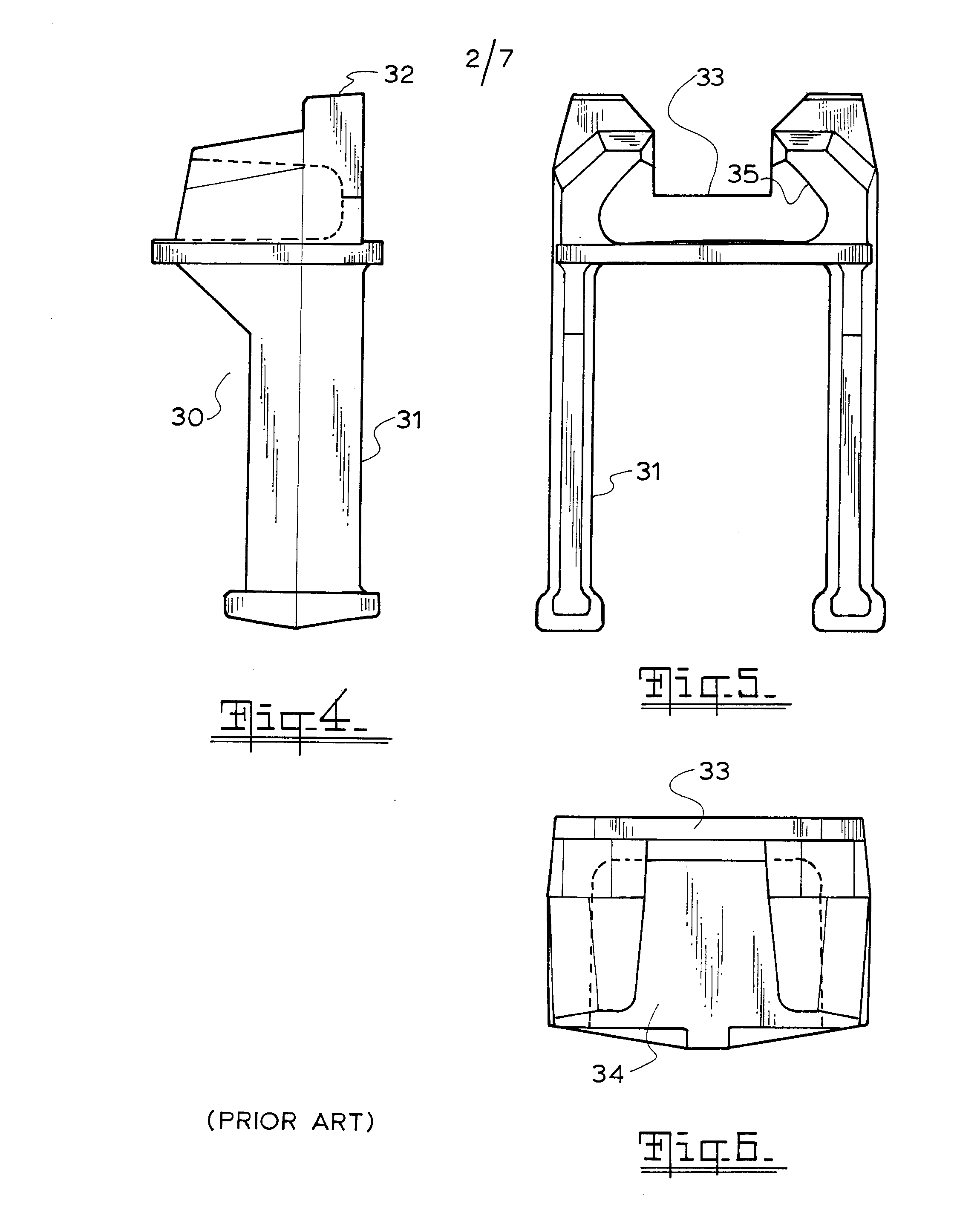Rail clip
- Summary
- Abstract
- Description
- Claims
- Application Information
AI Technical Summary
Benefits of technology
Problems solved by technology
Method used
Image
Examples
Embodiment Construction
[0016] A preferred embodiment of the invention will be described with reference to the drawings in which:
[0017]FIG. 1 is a side elevation of a typical K plate;
[0018]FIG. 2 is a plan view of a K plate;
[0019]FIG. 3 is an end view of a K plate showing the slot with curved upper surfaces which retain the tee bolt;
[0020]FIG. 4 is a side elevation of a cast metal shoulder with a clip slot similar to the one in a K plate;
[0021]FIG. 5 is an end elevation of a cast metal shoulder with a clip slot similar to the one in a K plate;
[0022]FIG. 6 is a plan view of a cast metal shoulder with a clip slot similar to the one in a K plate;
[0023]FIG. 7 is plan view of the fastener of this invention in a K plate;
[0024]FIG. 8 is a side elevation of the fastener of this invention in a K plate;
[0025]FIG. 9 is a side elevation of the fastener of this invention on a concrete tie having cast metal shoulders with slots similar to those in a K plate;
[0026]FIG. 10 is a plan view of the fastener of this ...
PUM
 Login to view more
Login to view more Abstract
Description
Claims
Application Information
 Login to view more
Login to view more - R&D Engineer
- R&D Manager
- IP Professional
- Industry Leading Data Capabilities
- Powerful AI technology
- Patent DNA Extraction
Browse by: Latest US Patents, China's latest patents, Technical Efficacy Thesaurus, Application Domain, Technology Topic.
© 2024 PatSnap. All rights reserved.Legal|Privacy policy|Modern Slavery Act Transparency Statement|Sitemap



